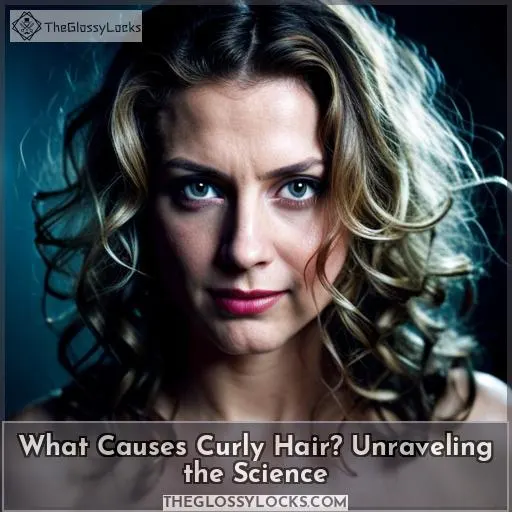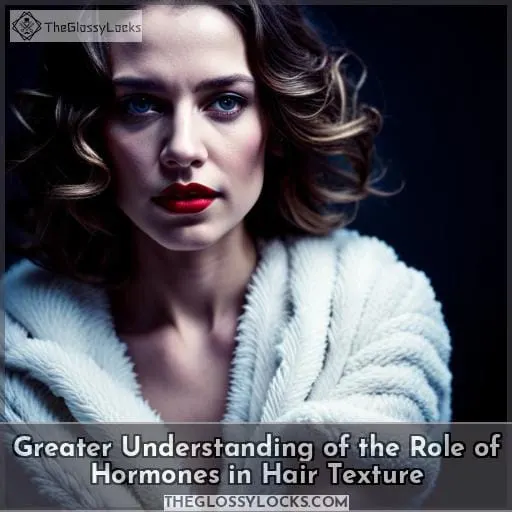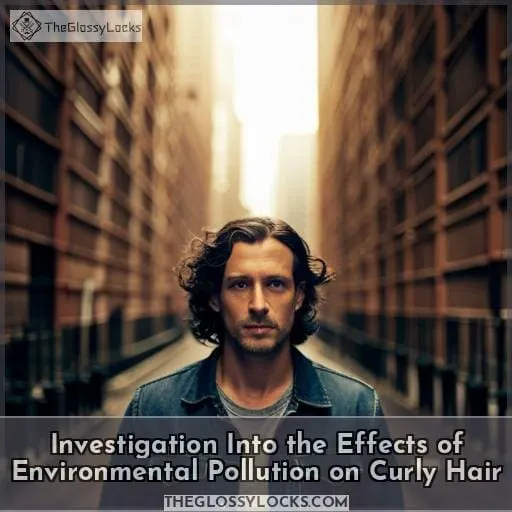This site is supported by our readers. We may earn a commission, at no cost to you, if you purchase through links.
 Do you ever find yourself marveling at the mysterious beauty of your hair? From straight to curly, each type of hair can bring unique charm and a sense of identity. But what causes some strands to swirl with curls while others remain smooth and straight? Uncovering the science behind this age-old query begins with understanding our individual biological makeup.
Do you ever find yourself marveling at the mysterious beauty of your hair? From straight to curly, each type of hair can bring unique charm and a sense of identity. But what causes some strands to swirl with curls while others remain smooth and straight? Uncovering the science behind this age-old query begins with understanding our individual biological makeup.
Table Of Contents
- Key Takeaways
- Potential Development of Targeted Hair Care Products
- Exploration of Gene Editing Techniques for Hair Shape Modification
- Greater Understanding of the Role of Hormones in Hair Texture
- Investigation Into the Effects of Environmental Pollution on Curly Hair
- Continued Efforts to Identify and Treat Health Conditions That Affect Hair Health
- Conclusion
Key Takeaways
- Hair texture is determined by genes, follicle shape, hormones, and environmental factors like pollution.
- Hormonal fluctuations can influence the tightness and directionality of curls.
- Environmental pollution affects curly hair more due to its unique structure.
- Curly hair can vary within a single person’s scalp due to hormonal influences.
Potential Development of Targeted Hair Care Products
You can now target your hair care needs with the potential development of tailored products based on our pre-existing knowledge of hair shape and structure. From genetic modification, hormone influence to environmental impact, all these factors play a role in defining one’s curls or lack thereof.
By understanding the makeup of curly hairs such as disulfide bonds and hydrogen bonds, we can develop health condition-specific treatments that would aid in nourishing dry scalps and taming frizz without damaging fragile strands.
Hair product innovation could also be used to modify existing products so they become more effective for particular individuals depending on their unique genetics or current health conditions at any given time.
With further exploration into how genes affect hair shaping processes alongside advances in technology, it’s only a matter of time before customized solutions emerge for those seeking luxurious locks that are both manageable yet stylishly chic!
Exploration of Gene Editing Techniques for Hair Shape Modification
Unlocking the mysteries of your hair shape may soon be possible with gene editing techniques, allowing you to customize your locks without compromising their health. Through genetic manipulation, it’s possible to alter the shape and texture of hair follicles through epigenetic changes.
These modifications could result in a new type of curly hair that’s been genetically modified for enhanced shine or strength while maintaining its natural luster and bounce. It can also provide an opportunity for people with naturally straight or wavy hair to have curls that stay put all day long. This is especially true for those who opt for a Deva Curl technique.
Scientists are also exploring how gene editing can be used to create different variations in scalp conditions such as dandruff or psoriasis by altering certain genes associated with those issues.
With today’s research on genetics and advanced technology advancements like CRISPR/Cas9-based therapies being explored more extensively than ever before, it won’t be long until we start seeing customized products designed just for us hitting store shelves worldwide!
Greater Understanding of the Role of Hormones in Hair Texture
Exploring the role of hormones in hair texture, you’ll gain new insights into why we see such a broad range of textures across our heads. Our genetic information and hormonal changes play an important part in determining our individual hair types.
When hormone fluctuations occur during puberty or menopause, the levels can drastically affect how curly or straight someone’s hair appears. The causes of curly hair are complex, but it is likely that these hormones influence follicle shape and size, which affects the tightness and directionality of curls produced by each strand as they grow out from their roots.
By understanding this process better, we can start to appreciate how a single person’s head may be home to numerous different kinds of curl patterns; even within one small section!
With further research into these mechanisms, it could help us discover more about what makes certain hairs curlier than others – potentially opening up exciting possibilities for personalized treatments tailored specifically to individuals’ needs!
Investigation Into the Effects of Environmental Pollution on Curly Hair
Investigating how pollutants in the environment can alter hair texture, you’ll discover that curly hair is particularly vulnerable. Its natural shape and structure make it more susceptible to damage caused by environmental factors such as humidity, air pollution, and UV radiation.
Curly follicles are more prone to breakage due to their curved shape, which makes them less resilient than straight strands when exposed to these damaging elements. To protect against environmental impacts on your curls, regular trims and the use of protective styling techniques, such as braiding or twisting, can help reduce exposure while maintaining healthy-looking locks.
Additionally, using products specifically developed for curly or coily textures will better equip your tresses with the right balance of moisture needed for resilience against harsh conditions like windy weather or high levels of air pollution in urban environments.
With careful attention paid towards proper maintenance routines involving nutrient-rich ingredients tailored towards preserving curl patterns despite varying climates, you’ll find a strong ally in keeping up with stylish looks throughout any season without compromising overall health!
Continued Efforts to Identify and Treat Health Conditions That Affect Hair Health
As you continue to care for your curly hair, don’t forget the importance of understanding and treating any health conditions that can affect its well-being. Hair health research suggests genetic influences, hormonal factors, and environmental impact all play a role in determining hair kinkiness or follicle angle.
Numerous alleles have been identified in the DNA that are associated with various curl patterns, so treatments may now be tailored based on personal genetics. Additionally, some medical conditions like alopecia areata or autoimmune thyroid disorders can cause severe damage to scalp tissue, leading to the loss of curls over time.
Fortunately, there is an increasing number of medications available today that target specific underlying causes for better treatment results than ever before! However, it’s important not only to identify potential issues but also to recognize when different products work best depending on individual needs.
With proper attention given towards both preventive measures as well as corrective solutions appropriate for each situation respectively, your curly hair should remain healthy-looking long-term.
Conclusion
As the old saying goes, the grass is always greener on the other side, and this phrase couldn’t be more true when it comes to hair. Curly hair is a coveted trait, but the science behind why hair is curly is a complex and ongoing exploration.
From potential gene editing techniques to further investigation into the effects of environmental pollution, there are many avenues for researchers to explore when it comes to figuring out what causes curly hair.
With continued efforts to identify and treat health conditions that affect hair health, researchers are beginning to unravel the mystery of what causes curly hair. Through this process, we can hope to develop targeted hair care products that can help ensure healthy, beautiful curls.








